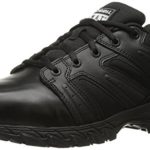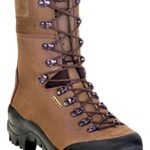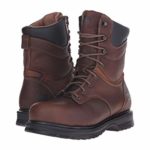I got the chance to review the Birkenstock Dundee a few months back when it was first introduced into the market. To find out how this unconventional Birkenstock design held up against the usual wear and tear that casual shoes go through, I dug up information to measure durability, comfort, and overall performance. At the end of it all, it wasn’t hard to see that the Dundee makes a great shoe investment.
With impressive comfort, support, and a lightweight design characteristic of Birkenstock, the Dundee isn’t without flaws. But considering all the features it brings to the table, it’s hard to say that it isn’t worth buying despite its design flaws.
So, what exactly does the Dundee have to offer? Discover more about this uncommon footwear design from Birkenstock and why it just might fit your fancy with this definitive review.
An Unconventional Birkenstock Aesthetic
When we hear the brand Birkenstock, we tend to think of softly curving sandals that prioritize comfort. So when they first dropped the Dundee, it really got quite a bit of attention because of its unconventional aesthetic.
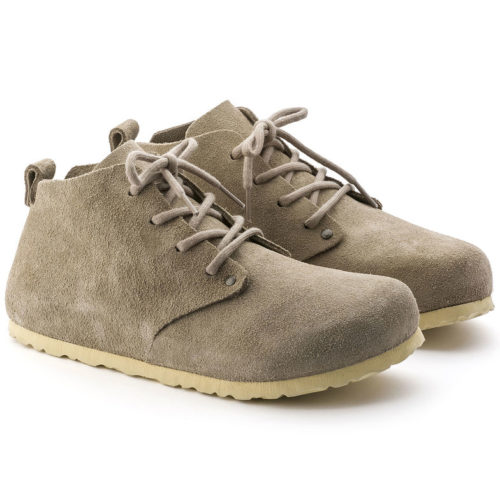
The overall silhouette makes the Dundee look more like a chunky desert boot. It uses a seamless construction that’s completely stitch free at a glance. Two small round plastic rivets hold either side of the quarter against the forefoot, but other than that, there’s really no other indication of a stitch or anything else that secures the uppers together. Neither is there any indication of how the uppers and soles secure against each other.
The lacing system is discreet and simple, as the eyelets don’t use any metal rings to prevent fraying. Other than a small imprint of the Birkenstock name across the medial side of the quarter, the shoe remains otherwise seamless and simple.
A Kind of Comfort We Know and Love
Despite looking completely different from typical Birkenstock designs, the Dundee does use a lot of the same concepts and features to provide maximum comfort during use. The cork-latex footbed is soft and reasonably responsive, taking on an anatomically accurate shape to properly cradle the different areas of your foot.
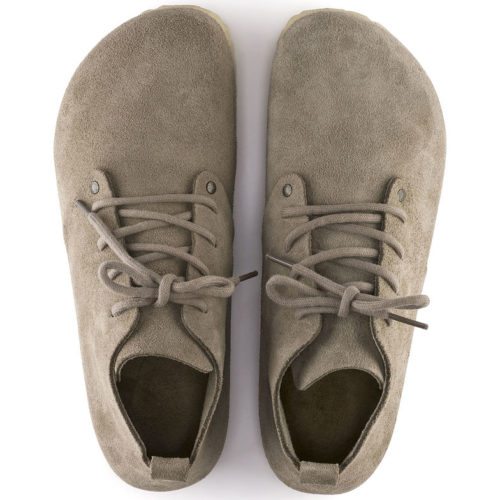
The toe box is exceptionally roomy, giving your feet enough space to accommodate positional changes during walking and movement. In combination with the ultra soft and pliable suede uppers, the shoe is nothing short of a dream to use even for extended periods of time.
In terms of breathability, there really is no complaining. The uppers feature an open pored design. So even with their solid construction, they make it possible for air to move through with ease. This creates a very comfortable internal climate that prevents the overproduction of sweat.
Probably the only issue I found with the comfort of the Dundee is the internal stitching. There’s a portion inside the shoe where the different parts of the uppers come together. These are stitched and covered with trimming which tends to dig into the skin, especially if you’ve got wider feet.
Of course, it’s not something a suitable pair of socks can’t fix, but it can be annoying at times if you’re particularly sensitive to these types of issues.
Durability Could Use Some Improvements
While I completely understand the aesthetic Birkenstock was trying to go for with the Dundee, it’s hard not to say that they sacrificed a bit of durability to achieve it. Don’t get me wrong – the seamless construction looks great from the outside. But constant flexing and movement can cause the connection between the uppers and the soles to wear out.
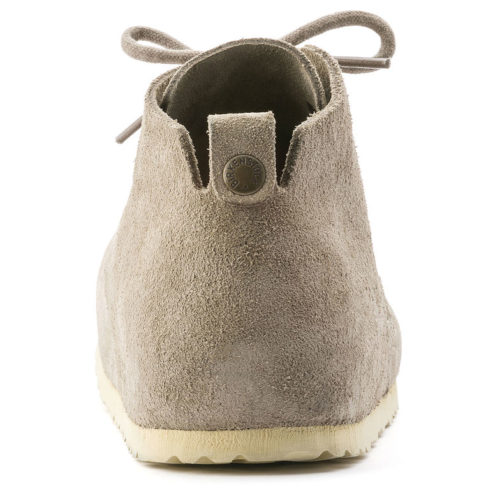
Over time, it’s very likely that the sole and uppers completely separate from each other, causing an opening around the edges of the shoes. Considering the fact that the uppers themselves are very soft and pliable, it’s really not impossible.
Another issue I couldn’t help but think of when using the Dundee was the durability of the uppers themselves. They’re really very forgiving of movement and although that does work wonders in terms of comfort, it can also be a resilience issue in the long run.
Believe it or not, the ultra soft uppers still break-in after some time. So what you get after a few months of use is a shoe that might be too soft to hold up against typical daily wear and tear. This leaves room for poor fit, rips, and a whole lot of creases.
Traction Wears Away With Time
One of Birkenstocks’ biggest flaws across all their footwear designs is traction. I honestly think that the outsole material is lackluster. This becomes especially apparent when you put it up against the rest of the footbed and sole construction.
Ultimately, the issue is that the treads on the soles are really easy to wear out. They feel soft and are just as pliable as the footbed so as to make way for flexion and movement. While this makes them comfortable and pleasant to walk in, it also sacrifices a large chunk of the soles’ resistance to damage, wear, and tear.
After a few weeks of use, there were already noticeable signs of compromised traction. The Dundees weren’t gripping as hard as they did when they were fresh out of the box. The pattern itself was evidently less prominent. This happens inevitably regardless of the surfaces you walk on. So even for just daily casual use on smooth, minimal friction surfaces and non-demanding environments, it’s very possible to wear out the Dundee’s treads.
A Number of Different Variations
To be able to cater to different discriminating tastes and preferences, the Birkenstock Dundee can be purchased in a variety of models. The basic silhouette, however, is simply called the Dundee and features suede uppers and an EVA sole that follows the color of the suede material.
The Dundee Plus adds a twist to the basic Dundee aesthetic. At the same time, it also somehow addresses the issue of the easily worn out sole. This version uses rubber in place of EVA, and features a contrasting color that lens a sporty look to the entire design. The sole also slightly thickens towards the heel area to add a little height to the shoe and create a rocking mechanism for a more comfortable walk.
Another variation is the Dundee Sport. This uses a more refined Ekte Skinn upper and a rubber sole with consistent height from forefoot to heel. The shaft is also slightly lower around the rear of the ankle creating a diagonal cut appearance. This slightly changes up the silhouette of the Dundee to create a sleeker look overall.
Pros of the Birkenstock Dundee Shoe
- Comfortable design and construction allows problem-free daily use.
- Anatomically shaped footbed topography provides superb support that prevents pain and injury.
- Smooth and seamless aesthetic is stylish and simple.
- Traction can be satisfying out of the box.
- Lots of different variations to choose from so you can match your favorite outfits with ease.
Cons of the Birkenstock Dundee Shoe
- Soft uppers still break-in after some use, leaving you with a shoe that might be too soft to resist damage.
- Seamless construction can cause the uppers and sole to rip away from each other.
- Sole treads tend to wear out after a few months.
- Inner stitching can dig into skin and cause discomfort.
The Bottom Line
While the Birkenstock Dundee definitely has its flaws, the benefits it offers definitely outweigh any design issues it might have. All in all, it’s a very comfortable shoe that offers an interesting aesthetic. And because Birkenstock does offer restoration services for wear and tear issues, the Dundee’s flaws can seem absolutely forgiveable.
So if you’re thinking about making that purchase, I would tell you to go for it. At the end of the day, the Dundees give great support, comfort, and style. Plus, it might last you long enough if you’re up to the task of caring for the shoe.
If you’re not too keen on all that upkeep though, I suggest you look into the Birkenstock Harris. This is a similar looking shoe that offers greater durability without sacrificing comfort and support.


